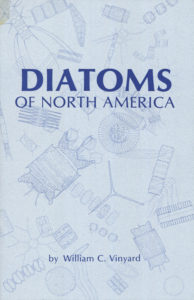Diatoms
Good Reference Book on Diatoms
This is a good starter reference book to diatoms. They are tiny creatures that can be easily seen under the microscope. Its fun to see them but much more rewarding to be able to identify them. I capture my samples with a plankton net.
Diatoms are excellent subjects for study by amateurs under the microscope. They occur in lots of locations so besides being beautiful they are easily found in marine and freshwater settings. Diatoms are recognizable by their silca-based ‘shells’ called frustules.These are in two halves, and contain the living organism.
A good guide to diatoms is William Vinyard’s book which is available from online book dealers. This book will bring pleasure to the viewing of diatoms because it gives an easily followed identification index. It also provides lots of background on the biology of diatoms.
The book
Some Images of Marine Diatoms from the Georgia Strait British Columbia

















